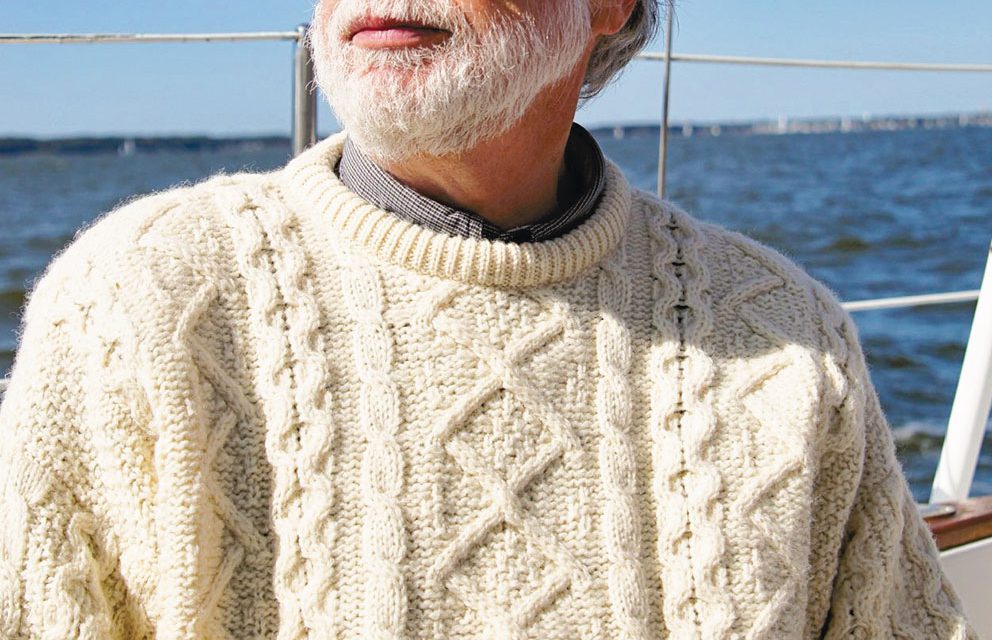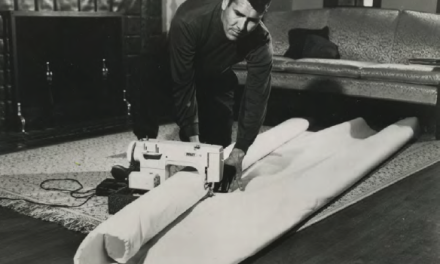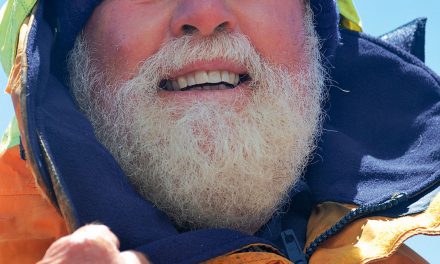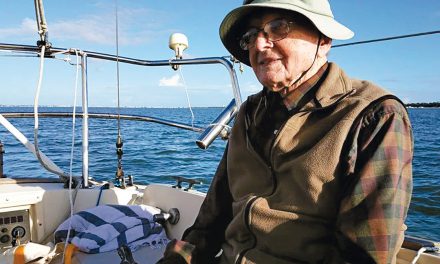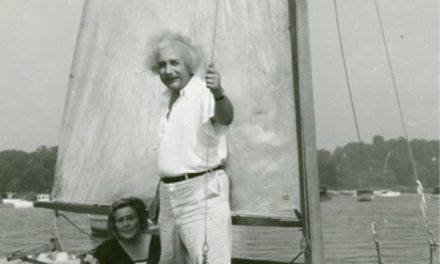Issue 137: March/April 2021
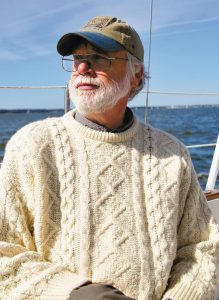
Many boat owners will never have heard the name George Hazen, but most yacht designers know it well. It’s a bit of a cliché to say that George, who died in December 2020, was a boat designer’s designer, but he was.
I first met George in the 1970s, when we both worked in the design office of C&C Yachts in Canada. He was already making a name for himself in the technical side of sailboat design. While obtaining his Master of Naval Architecture degree at MIT, he was instrumental in the research for the Irving Pratt Project, an initiative to develop a sailboat velocity prediction program that would become the backbone of the Measurement Handicap System (MHS) and the International Measurement System (IMS) in the 1980s.
He thus landed on C&C’s doorstep with skills that were a little intimidating for those of us still working in the era of hand-drawn and hand-calculated everything. I can admit now that we were slow to adopt George’s new way of designing, as the office did not even own a computer! Undaunted, he worked some magic with the available technology, programmable calculators. He converted many of our “cookbook” design processes to programmable versions. In particular, he had the keel design process refined and stored on those little magnetic strips that we zipped through a Hewlett Packard HP41-C to run the program.
With limited access to a computer powerful enough to run his new Velocity Prediction Program (VPP) code, George put his hand to designing boats as well as analyzing. The classic C&C 40 and the Boston Whaler Harpoon 4.6 dinghy both received the Hazen touch. (Even after his work at C&C, he continued to hone his design skills in the Dickerson 37, a nicely proportioned cruising sailboat offered as a sloop and a ketch.)
In 1979, George left C&C and returned to Annapolis, where he opened Design Systems and Services to develop a set of computer programs for yacht designers. I was honored to work with him for a year developing that suite of software, but my biggest contribution was coming up with its name—FastYacht. FastYacht included modules for hull design and fairing, hydrostatics, keel and rudder design, sailplan analysis, and the final performance assessment with the Performance Prediction Program (PPP). At the time, this was nothing short of revolutionary—a set of yacht design programs that ran on a first-generation desktop computer. Any sailor who has ever seen the polar plot of velocities for their boat has seen the work of George Hazen.
Before George’s work, the only means a designer had to evaluate a design was to build the boat, take it sailing, and hope that it performed well. Because of this expensive and time-consuming process, most designers tended to be rather conservative, basing their designs on what had been proven and making only minor changes to the tried-and-true. FastYacht allowed designs to be tested without building them, and it changed yacht design forever.
George’s strengths combined an impressive command of the computer coding of complex mathematical and logical processes with the practical knowledge of how designers like to work. In a series of logical steps, FastYacht became FastShip (used by ship designers and builders, navies, and global research facilities, among others), while his company went through several takeovers as various people saw the merit of his skill and knowledge. In its final iteration, FastShip became a plugin for Rhino3D software as RhinoMarine, and now lives on as Orca3D under the leadership of George’s partners and friends, Bruce Hays and Larry Leibman.
George was one of the smartest people I have known. He had a deep technical knowledge of things aero- and hydrodynamic; most of us function with just a fraction of his command of these subjects. He was able to code that knowledge into a software program that others could master and use to great effect. But there was the human side of George, too, soft-spoken but confident, husband and father, superb guitar player, and knowledgeable in almost any subject put to him. He seemed to effortlessly cover all of the bases many aspire to, but few achieve.
Yacht designers are thankful to have worked with George or to have used his software to develop better boats. Countless boat owners who have won a race or made a long passage in a seaworthy vessel are unknowingly indebted to him. Even though George has left us, his influence on the industry will endure.
Steve Killing is a yacht designer from Midland, Ontario. He uses George Hazen’s software every day designing everything from canoes and kayaks to classic mahogany powerboats and America’s Cup contenders. You can see his work at stevekilling.com.
Thank you to Sailrite Enterprises, Inc., for providing free access to back issues of Good Old Boat through intellectual property rights. Sailrite.com

